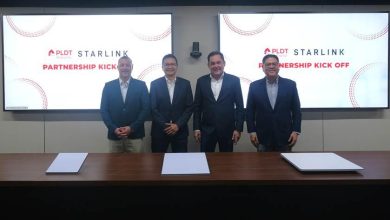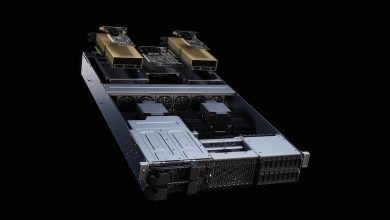CloudWAN 3.0: Enhancing WANs with Convergence Architecture Upgrade for Ultimate-Experience

Huawei Network Summit 2023 Jakarta brings together guests and partners from ISPs as well as transportation, energy, and other industries across the Asia-Pacific region to discuss future network development and technological innovations under the theme of the summit “Intelligent IP Network, Innovations Never Stop.”
In a keynote speech at the summit, Zuo Meng, President of the Metro Router Domain of Huawei’s Data Communication Product Line, unveiled two flagship WAN products: NetEngine 8000 F8 and NetEngine 8000 M14. The two products are designed to improve industry service experience and are a testament to Huawei’s continued upgrade of product capabilities.
The NetEngine 8000 F8 is an ultimate high-density universal-service aggregation router. Measuring 13 U high, it provides a forwarding performance of 2 Tbps (evolvable to 6.4 Tbps) and up to 64 100GE ports or 576 10GE ports. With a reliable architecture, ultra-high port density, 10GE/100GE port FlexE slicing capabilities, and ultra-low power consumption (40% lower than industry average), it is an ideal choice for WANs with numerous devices and large-scale connections. The NetEngine 8000 M14 is an all-in-one universal-service aggregation router. Measuring only 5 U high, it provides a forwarding performance of 2 Tbps (evolvable to 3.6 Tbps). It is the industry’s first fixed-configuration router that can support 400GE ports and provides up to 32 100GE ports. And with a small footprint and large capacity, it can be flexibly used for different services.
In an afternoon speech given at the WAN session on the same day, Zuo Meng pointed out that ICT infrastructure serves as the cornerstone for the digital economy. And the IP WAN, like a bridge between campuses and data centers, lays a foundation for industry digital transformation in the Asia-Pacific region.
Herry Kurniawan, Data Communication CTO of the Enterprise Business Dept, Indonesia Rep Office, Huawei, shed light on the brand-new network construction concept of the CloudWAN 3.0 solution from the perspective of upgrades in three key aspects: converged network, converged device, and converged management. He delved into the industry requirements in the Asia-Pacific region, covering private network construction by government agencies for office systems, service provisioning efficiency and service quality of ISPs, and service planning, deployment, and O&M perception in transportation and energy industries. And he explained how the CloudWAN 3.0 solution perfectly meets the industry requirements mentioned earlier.
Huawei’s brand-new CloudWAN 3.0 solution provides efficient and powerful data transmission, a flexible and easy-to-manage architecture, converged service transport, and automated and intelligent O&M capabilities through convergence upgrades, helping build WANs with ultimate experience.
- In terms of converged network, a single backbone network is used to provide unified access for provincial, municipal, and county-level organizations. Slicing technology allows the network to carry different types of services, enabling multi-network convergence. This not only meets the SLA requirements of different types of services, but also improves network utilization and slashes network construction costs.
- In terms of converged device, an innovative hardware architecture is introduced to provide CGN, IPsec, and SA functions through different subcards. This architecture allows one router to provide the functions of multiple dedicated devices, which simplifies the network, enhances network reliability, improves user experience, and reduces space consumption.
- In terms of converged management, iMaster NCE-IP’s Network Digital Map is used to simplify full-lifecycle O&M, integrate management and O&M views, detect network changes in real time, quickly alleviate congestion, and improve operational efficiency.
With powerful IPv6 Enhanced innovation capabilities and in-depth understanding of industry trends, Huawei Data Communication has helped customers from sectors such as government, ISP, transportation, and energy in more than 170 countries and regions build agile, reliable, and intelligent networks, injecting continuous digital vitality for the upgrade of enterprise industries.




